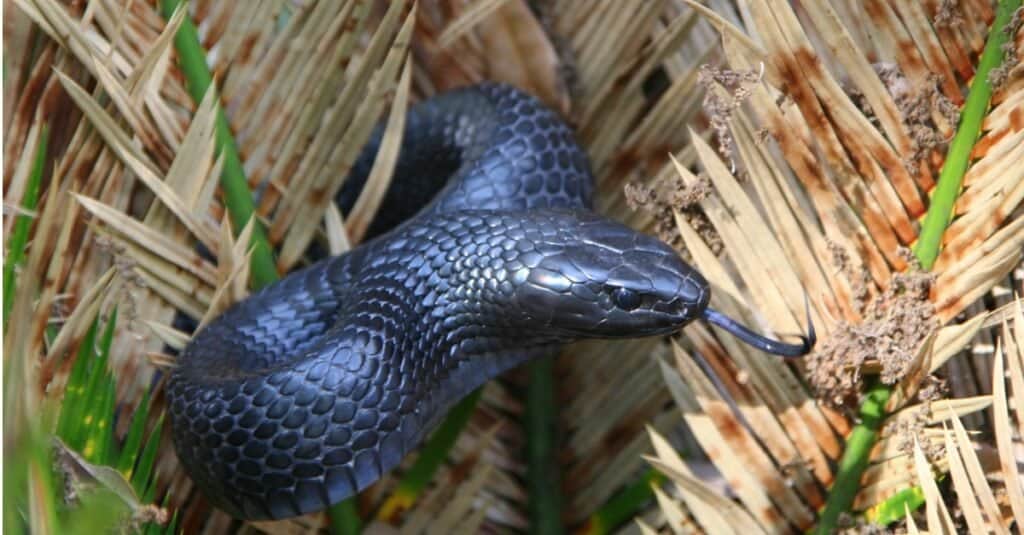Introduction
Tiger snakes are among the most popular and feared reptiles in Australia, extensively recognized for their striking appearance and potent venom. This short article intends to look into the complexities of the tiger snake's environment, circulation, behavior, and what one can anticipate when coming across these remarkable animals. By understanding where to locate them and exactly how to browse potential dangers, you can appreciate their role in the environment while guaranteeing your safety and security.


Tiger Serpent Habitat: Where to Locate Them and What to Expect
Tiger snakes are predominantly located in southeastern Australia, consisting of Tasmania, where they flourish in a variety of environments. Their flexibility allows them to inhabit diverse surfaces such as coastal areas, marshes, meadows, and also metropolitan areas.
Geographical Distribution of Tiger Snakes
The geographical reach of tiger serpents prolongs throughout a number of Australian states. They are Risk Factors particularly common in:
- Tasmania: The Tasmanian tiger serpent is one of one of the most recognized subspecies. Victoria: Discovered near water bodies like rivers and lakes. New South Wales: Favoring bushland areas near to water sources. Western Australia: Even more frequently seen around swamps and estuaries.
Understanding the geographical circulation is vital for both conservation initiatives and public recognition concerning experiences with these snakes.
Preferred Habitats of Tiger Snakes
Tiger snakes prosper in various habitats. Below are some common atmospheres where they may be discovered:
Wetlands: They choose marshy or marshy locations where they can access target easily. Coastal Regions: Near beaches or rocky coastlines provide plentiful food sources like fish and amphibians. Forested Areas: Dense brushwood supplies sanctuary from killers while giving hunting grounds.Behavioral Patterns Associated with Habitat
Understanding tiger snake actions within their habitats is important for communication monitoring:
- Nocturnal Activity: Tiger serpents have a tendency to be much more active during golden hours (sunset and dawn), making them more challenging to detect throughout daytime. Territorial Nature: They exhibit territorial actions; hence, it's vital to appreciate their area if encountered.
This understanding can assist mitigate undesirable communications between human beings and tiger snakes.

Are Tiger Snakes Venomous?
Yes, tiger serpents are indeed venomous. Their venom contains neurotoxins that can cause paralysis or even fatality if untreated.
What Makes Their Venom Dangerous?
The strength of a tiger serpent's venom varies relying on several variables: Australian Tree Snakes
- Geographic location Individual health Quantity injected during a bite
Symptoms of a Tiger Serpent Bite
Recognizing symptoms early is critical:
- Pain at the bite site Swelling Difficulty breathing
Immediate medical attention is crucial if bitten.
First Help for Snake Bites
Knowing emergency treatment procedures can be lifesaving in situation of a snake bite.
First Help Tips for Serpent Bites
Stay calmness; maintain the afflicted location still. Call emergency situation services immediately. Apply a stress bandage over the bite site. Keep the specific resting up until assistance arrives.Following these steps can substantially improve results complying with a serpent encounter.
Where Else Can You Encounter Tiger Snakes?
While they're often discovered in their all-natural environments, urbanization has resulted in increased experiences with humans.
Urban Encounters
Tiger serpents might venture into gardens or parks looking for food or water sources.
Precautions When Treking or Exploring
When exploring areas recognized for tiger serpent environments:
- Wear thick boots Stay on paths Be vigilant
Taking these preventative measures will certainly assist decrease risks while you appreciate nature.
Baby Tiger Snakes: An One-of-a-kind Viewpoint on Growth
Just Dangerous snakes Australia like adults, infant tiger serpents are birthed poisonous yet smaller in size.
Characteristics of Child Tiger Snakes
- Size: Typically around 20-- 30 centimeters when born. Appearance: Sporting activity comparable pigmentation as adults but might have lighter bands initially.
Understanding their development assists in appreciating their eco-friendly function from infancy onward.
FAQs regarding Tiger Snakes
1. Are all tiger snakes venomous?
Yes, all species of tiger snakes have venom capable of creating severe harm.
2. How can I identify a tiger snake?
Look for unique banding patterns ranging from yellowish-brown to blackish colors along their bodies; adults normally grow between 1-- 2 meters long.
3. What need to I do if bitten by a tiger snake?
Seek immediate clinical focus; apply emergency treatment measures as discussed earlier while keeping calm.
4. Do child tiger snakes position any type of danger?
Absolutely! In spite of their tiny size, infant tiger snakes are still venomous and can supply attacks that require major clinical attention.
5. Are there any kind of certain environments I ought to avoid?
Avoid walking through thick underbrush or near stagnant water where conditions favor snake existence during warmer months.
6. Exactly how do preservation initiatives influence tiger snake populations?
Conservation campaigns concentrate on habitat conservation which directly influences populace stability by making certain sufficient food sources and safe breeding locations.
Conclusion
In summary, comprehending "Tiger Snake Environment: Where to Locate Them and What to Expect" not only improves our knowledge regarding these exceptional reptiles yet likewise enhances our capability to coexist safely with them in shared atmospheres. From recognizing their liked habitats to recognizing how to react successfully if bitten, detailed understanding encourages us all-- whether we're wild animals enthusiasts or casual hikers-- to value this fascinating element of Australia's all-natural heritage while prioritizing our safety.
This short article acts as a comprehensive guide on everything related to tiger snake environments! Whether you're a passionate traveler or a person looking simply for information concerning these animals, understanding how they communicate within their environments-- and how we match that image-- is crucial!